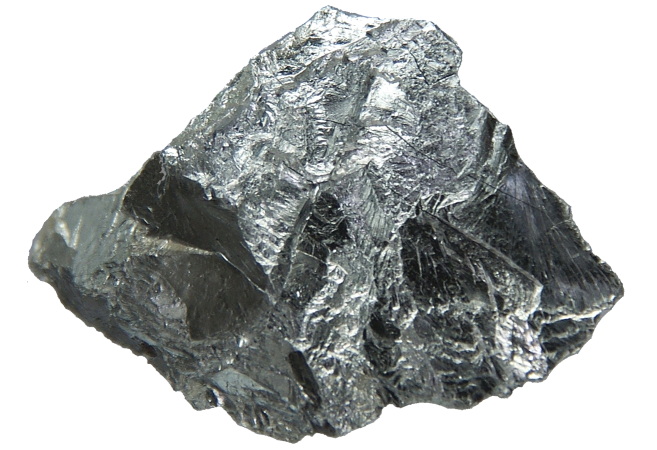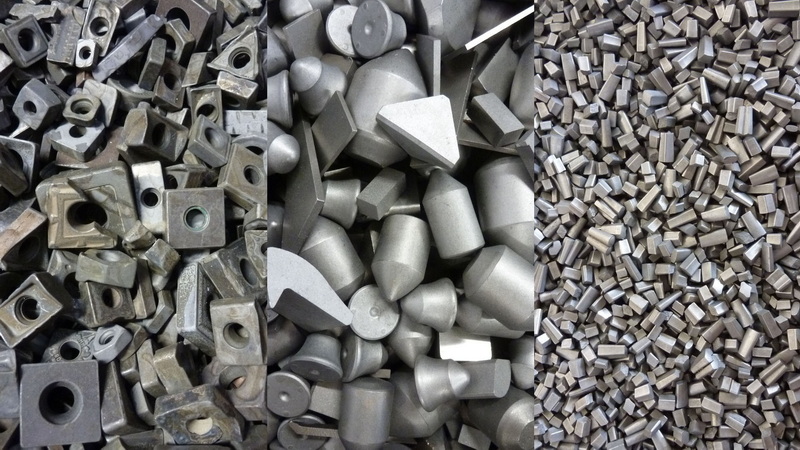Content Menu
● Introduction
● Understanding Tungsten
>> Applications of Tungsten
>> Physical Properties of Tungsten
● Understanding Tungsten Carbide
>> Production of Tungsten Carbide
>> Applications of Tungsten Carbide
>> Physical Properties of Tungsten Carbide
● Comparing Strengths: Tungsten vs. Tungsten Carbide
>> Hardness and Durability
>> Brittleness vs. Ductility
>> Tensile Strength
>> Applications Based on Strength Characteristics
>> Cost Considerations
>> Environmental Impact
● Real-world Examples
>> Example 1: Aerospace Components
>> Example 2: Cutting Tools
>> Example 3: Jewelry Industry
● Conclusion
● FAQ
>> 1. Is tungsten carbide more durable than pure tungsten?
>> 2. Can tungsten carbide shatter?
>> 3. What are common uses for pure tungsten?
>> 4. Why do jewelers prefer tungsten carbide for rings?
>> 5. How does the density of tungsten compare to that of tungsten carbide?
● Citations:
Introduction
The debate over whether tungsten carbide is stronger than tungsten is a nuanced one, as it involves understanding the properties, applications, and structural differences between these two materials. Tungsten and tungsten carbide are both significant in industrial applications, but they serve different purposes due to their unique characteristics. This article will explore the differences between tungsten and tungsten carbide, focusing on their strength, hardness, durability, and suitable applications.

Understanding Tungsten
Tungsten is a chemical element with the symbol W and atomic number 74. It is renowned for its remarkable physical properties:
- High Density: Tungsten is one of the densest metals, with a density of approximately 19.3 g/cm³.
- Melting Point: It has the highest melting point of all metals, at around 3,422 °C (6,192 °F).
- Hardness: On the Mohs hardness scale, tungsten ranks between 7.5 and 8.
- Ductility: Tungsten is relatively ductile compared to other metals, allowing it to withstand significant stress without breaking.
Applications of Tungsten
Tungsten's properties make it suitable for various applications, including:
- Electrical Contacts: Due to its excellent conductivity.
- Light Bulb Filaments: Its high melting point allows it to endure high temperatures.
- Aerospace Components: Used in applications requiring high strength and thermal resistance.
- Military Applications: Utilized in armor-piercing ammunition due to its density and hardness.
Physical Properties of Tungsten
Tungsten's unique physical properties contribute to its versatility:
1. Thermal Conductivity: Tungsten has excellent thermal conductivity, making it ideal for heat sinks in electronics.
2. Corrosion Resistance: It exhibits good resistance to oxidation at high temperatures.
3. Tensile Strength: With a tensile strength of about 1510 MPa, tungsten can withstand substantial forces without deformation.
Understanding Tungsten Carbide
Tungsten carbide (WC) is a compound formed by combining tungsten with carbon. This alloy exhibits distinct characteristics that differentiate it from pure tungsten:
- Hardness: Tungsten carbide ranks between 9 and 9.5 on the Mohs hardness scale, making it one of the hardest materials known.
- Brittleness: While extremely hard, tungsten carbide is also more brittle than tungsten.
- Density: It has a density of about 15.6 g/cm³.
Production of Tungsten Carbide
Tungsten carbide is produced by heating tungsten powder with carbon at temperatures ranging from 1,400 to 1,600 °C (2,550 to 2,900 °F). The result is a compound that is significantly harder than pure tungsten. The process often involves the use of a binder material (usually cobalt) to enhance toughness and reduce brittleness.
Applications of Tungsten Carbide
Due to its hardness and durability, tungsten carbide is widely used in:
- Cutting Tools: For machining and metalworking due to its wear resistance.
- Jewelry: Particularly in wedding bands because of its scratch resistance.
- Mining Equipment: For drill bits and other tools that require extreme durability.
- Industrial Machinery: Used in parts that experience high wear rates.
Physical Properties of Tungsten Carbide
Tungsten carbide possesses several notable physical properties:
1. Wear Resistance: Its extreme hardness makes it highly resistant to wear and tear.
2. Thermal Stability: It maintains its strength at elevated temperatures better than many other materials.
3. Chemical Resistance: Tungsten carbide resists corrosion from various chemicals.

Comparing Strengths: Tungsten vs. Tungsten Carbide
Hardness and Durability
When comparing hardness:
- Tungsten Carbide: Ranks between 9 and 9.5 on the Mohs scale.
- Tungsten: Ranks between 7.5 and 8.
This means that tungsten carbide is significantly harder than tungsten. The extreme hardness of tungsten carbide translates into exceptional wear resistance and durability in applications where abrasion is a concern.
Brittleness vs. Ductility
While tungsten carbide offers superior hardness, it comes with increased brittleness. This means that:
- Tungsten can withstand heavier impacts without chipping or fracturing due to its ductility.
- Tungsten Carbide, while hard, may shatter under high-impact conditions.
Tensile Strength
In terms of tensile strength:
- Tungsten has a tensile strength of approximately 1510 MPa.
- Tungsten Carbide, depending on its composition (especially binder content), can exhibit varying tensile strengths but typically ranges around 344 MPa.
This indicates that while tungsten carbide may be harder overall, pure tungsten can handle more stress before failing.
Applications Based on Strength Characteristics
Given these properties, the choice between tungsten and tungsten carbide often depends on the application:
- Use Tungsten When:
- High impact resistance is required (e.g., aerospace components).
- Electrical conductivity is essential (e.g., electrical contacts).
- Use Tungsten Carbide When:
- Extreme wear resistance is needed (e.g., cutting tools).
- A durable material for jewelry or decorative items is desired.
Cost Considerations
Another factor influencing the choice between these materials is cost:
- Tungsten Prices: Generally more expensive due to mining and processing costs.
- Tungsten Carbide Prices: Often less expensive than pure tungsten but can vary based on binder content and manufacturing processes.
Environmental Impact
Both materials have environmental considerations associated with their extraction and processing:
1. Mining Practices for Tungsten: Can lead to habitat destruction if not managed responsibly.
2. Production of Tungsten Carbide: Involves energy-intensive processes that can contribute to carbon emissions.
Real-world Examples
To further illustrate the differences between these two materials, let's look at some real-world applications where each excels:
Example 1: Aerospace Components
In aerospace engineering, components made from pure tungsten are often used due to their ability to withstand extreme temperatures without melting or deforming. For example, rocket engine nozzles utilize tungsten for its thermal stability.
Example 2: Cutting Tools
In manufacturing environments where cutting tools are subjected to constant wear from metalworking processes, tungsten carbide tools are preferred due to their hardness and wear resistance. These tools maintain sharp edges longer than those made from other materials.
Example 3: Jewelry Industry
In the jewelry industry, particularly for wedding bands, tungsten carbide has gained popularity due to its scratch-resistant properties and aesthetic appeal. It can be polished to a high shine while remaining resistant to everyday wear.
Conclusion
In conclusion, whether tungsten carbide is stronger than tungsten depends on the specific context in which "strength" is defined. If we consider hardness as a measure of strength, then tungsten carbide surpasses pure tungsten significantly. However, when evaluating impact resistance and ductility under stress conditions, pure tungsten demonstrates superior performance. Each material has its unique advantages that cater to different industrial needs.
Understanding these differences allows manufacturers and consumers alike to make informed choices based on their specific requirements for strength, durability, and application suitability.

FAQ
1. Is tungsten carbide more durable than pure tungsten?
Yes, tungsten carbide is more durable due to its higher hardness rating on the Mohs scale (9-9.5) compared to pure tungsten (7.5-8).
2. Can tungsten carbide shatter?
Yes, while very hard, tungsten carbide can be brittle and may shatter under high-impact conditions.
3. What are common uses for pure tungsten?
Common uses for pure tungsten include electrical contacts, light bulb filaments, aerospace components, and military applications due to its high melting point and density.
4. Why do jewelers prefer tungsten carbide for rings?
Jewelers prefer tungsten carbide for rings because it offers superior scratch resistance and durability compared to other metals used in jewelry.
5. How does the density of tungsten compare to that of tungsten carbide?
Tungsten has a density of about 19.3 g/cm³ while tungsten carbide has a density of approximately 15.6 g/cm³.
Citations:
[1] https://touchwood.biz/blogs/southafrica/what-is-the-difference-between-pure-tungsten-and-tungsten-carbide
[2] https://cowseal.com/tungsten-vs-tungsten-carbide/
[3] https://ferro-tic.com/product-information/
[4] https://blog.theartisanrings.com/tungsten-vs-tungsten-carbide-the-ultimate-comparison-guide/
[5] https://konecarbide.com/wp-content/uploads/2024/02/tungsten-vs-tungsten-carbide-blog-cover.jpg?sa=X&ved=2ahUKEwiSwbLL9aKLAxUBMNAFHU_-IGYQ_B16BAgIEAI
[6] https://www.josephjewelry.com/guide/glossary/carbide
[7] https://konecarbide.com/wp-content/uploads/2024/02/tungsten-vs-tungsten-carbide-blog-cover.jpg?sa=X&ved=2ahUKEwijvbTL9aKLAxUnpIkEHTMXHfUQ_B16BAgEEAI
[8] https://www.practicalmachinist.com/forum/threads/carbide-vs-tungsten-carbide-in-tool-realm.336544/
[9] https://extremecoatings.net/technical-resources/coating-formulas/tungsten-chromium-carbide-coatings/
















